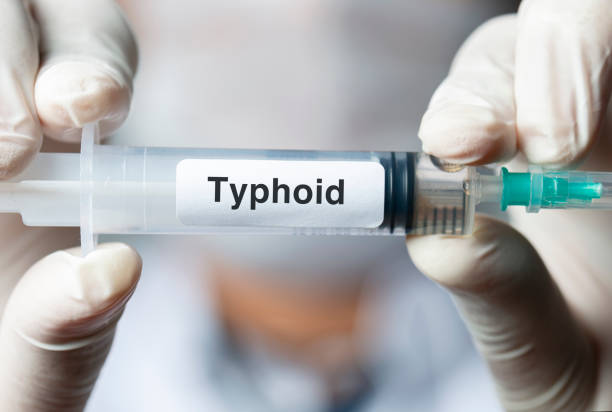
Typhoid fever, a serious illness caused by the bacterium Salmonella typhi, remains a significant health concern, particularly in regions with poor sanitation and limited access to clean water. This bacterial infection spreads through contaminated food and water, and without timely and accurate diagnosis, it can lead to severe complications or even death. Understanding the symptoms, diagnostic methods, and the importance of early detection is crucial for effective management and treatment of typhoid fever.
Symptoms of Typhoid Fever
Typhoid fever presents a range of symptoms that can vary in severity. Initially, the disease manifests with:
- Fever - A gradual increase in temperature, often reaching as high as 104°F (40°C).
- Headache - Persistent and often severe headaches.
- Weakness and Fatigue - General feeling of weakness and tiredness.
- Abdominal Pain - Discomfort and pain in the stomach area.
- Gastrointestinal Issues - Symptoms such as diarrhoea or constipation.
- Rose Spots - Small, pink spots on the chest and abdomen, visible in some patients.
- Loss of Appetite - Decreased desire to eat.
- Dry Cough - A persistent, dry cough can develop.
As the disease progresses, the symptoms may become more severe, including confusion, delirium, and an enlarged spleen and liver. Early symptoms can be mistaken for other illnesses, making accurate diagnosis vital.
Diagnostic Tests for Typhoid Fever
Early and precise diagnosis of typhoid fever is essential for effective treatment. Several diagnostic tests are used to detect the presence of Salmonella typhi
- Blood Culture: The most definitive test for diagnosing typhoid fever. Blood samples are taken and cultured to detect the presence of Salmonella typhi. This test is most effective in the first week of illness.
- Widal Test: A serological test that detects antibodies against Salmonella antigens in the patient's blood. While widely used, it has limitations due to potential cross-reactivity with other infections and varying interpretation standards.
- Typhoid PCR (Polymerase Chain Reaction): A molecular test that detects Salmonella typhi DNA in blood samples. This method is highly sensitive and specific but may not be readily available in all healthcare settings.
- Bone Marrow Culture: Though more invasive, this test is highly sensitive and can be used when blood cultures are inconclusive.
- Stool and Urine Cultures: These can also be used to identify the bacteria but are generally less reliable than blood cultures.
Importance of Early Detection
The importance of early detection of typhoid fever cannot be overstated. Timely diagnosis allows for:
- Prompt Treatment: Early identification of the disease enables immediate initiation of antibiotic therapy, which is crucial for managing symptoms and preventing complications.
- Prevention of Complications: Untreated or delayed treatment of typhoid fever can lead to serious complications, such as intestinal perforation, severe dehydration, and multi-organ failure. Early treatment significantly reduces these risks.
- Reducing Transmission: Accurate and early diagnosis helps in isolating the infected individuals, thus preventing the spread of the bacteria to others, especially in areas with high population density.
- Improved Prognosis: Early treatment is associated with a higher rate of recovery and reduces the likelihood of relapse or chronic carrier state, where individuals continue to harbour and spread the bacteria even after recovery.
- Public Health Interventions: Identifying and treating typhoid fever cases promptly helps public health authorities in implementing control measures, such as improving water sanitation and hygiene practices, to prevent outbreaks.
Conclusion
Typhoid fever remains a global health challenge, particularly in developing countries. Recognizing the symptoms and understanding the diagnostic methods are critical steps in combating this disease. Early detection through appropriate diagnostic tests not only facilitates timely treatment but also plays a significant role in preventing complications and controlling the spread of the infection. As such, improving access to accurate diagnostic tools and promoting awareness about typhoid fever are essential components of public health strategies aimed at reducing the burden of this potentially life-threatening illness.

